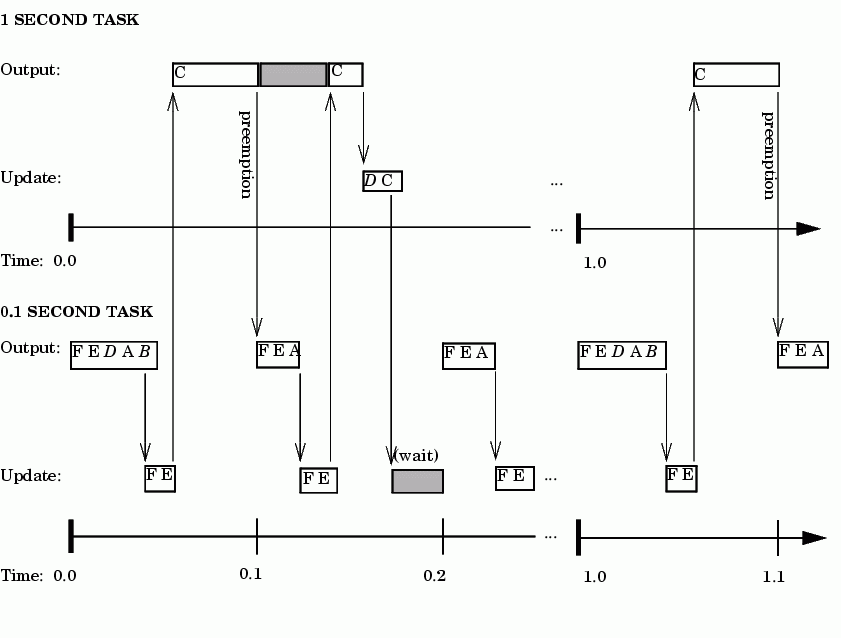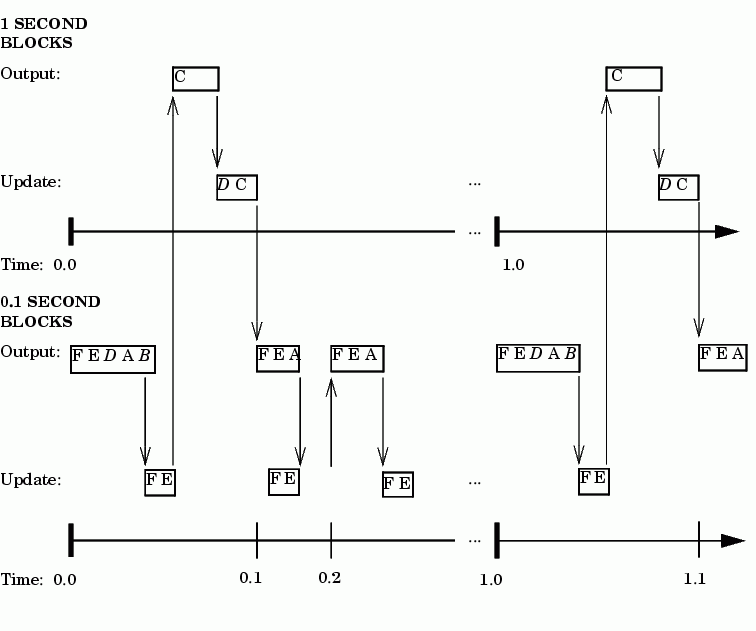

| Real-Time Workshop |   |
Multitasking Execution
In this section, we will consider the execution of the model when the solver mode is MultiTasking. Block computations are executed under two tasks, prioritized by rate:
Table 8-2 shows, for each block in the model, the execution order, the task under which the block runs, and whether the block has an output or update computation.Blocks A and B do not have discrete states, and accordingly do not have an update computation.
| Blocks (in Execution Order) |
Task |
Output |
Update |
| F |
0.1 second task |
Y |
Y |
| E |
0.1 second task |
Y |
Y |
| D |
Output promoted to run under 0.1 second task (see Block Priority Promotions) Update runs under 1 second task |
Y |
Y |
| A |
0.1 second task |
Y |
N |
| B |
Promoted to run under 0.1 second task (see Block Priority Promotions) |
Y |
N |
| C |
1 second task |
Y |
Y |
Real-Time Multitasking Execution
Figure 8-13 shows the scheduling of computations in MultiTasking solver mode when the generated code is deployed in a real-time system.The generated program is shown running in real time, as two tasks under control of interrupts from a 10 Hz timer.

Figure 8-13: Multitasking Execution of Model in a Real-Time System
Block Priority Promotions. Notice following block "promotions":
On each tick, all the outputs and updates for the faster blocks must run before the lower-priority block (C) gets any run time. Only block C runs entirely in the 1 second task. In Figure 8-13, C does not complete its output computation within the first 0.1 second tick, so it is preempted by the higher-priority task at time 0.1. C then resumes and completes, at which point the update function for D is executed. There is then some idle time before the next tick.
If the computations for block C were to take longer than 1 second, an interrupt overflow error condition would exist.
Notice that in multitasking mode, the program makes more efficient use of time than in singletasking mode, as it spends less time in an idle state.
Simulated Multitasking Execution
Figure 8-14 shows the execution of the same model in Simulink, in MultiTasking solver mode. In this case, Simulink runs all blocks in one thread of execution, simulating multitasking. No preemption occurs.

Figure 8-14: Multitasking Execution of Model in Simulink
 | Singletasking Execution | Optimizing the Model for Code Generation |  |